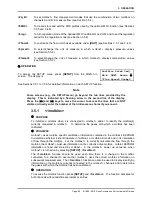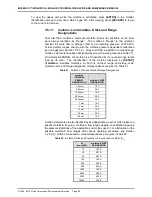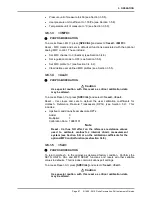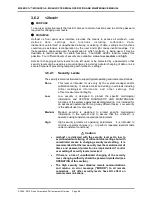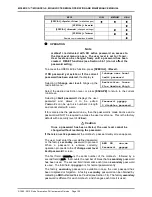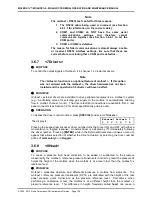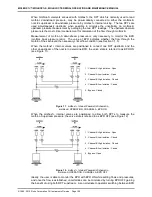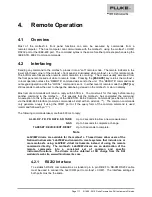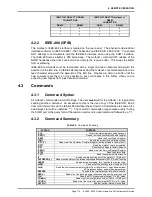
™/S, MOLBLOC TERMINAL OPERATION AND MAINTENANCE MANUAL
© 1995 - 2010 Fluke Corporation, DH Instruments Division
Page 98
3.6.2
<2level>
PURPOSE
To set user protection levels that restrict access to certain functions and to edit the password
required for changing user levels.
PRINCIPLE
’s front panel user interface provides the means to access all user
d e f in e d d a t a , s e t t i n g s a n d f u n c t i o n s i n c lu d in g c a l ib r a t i o n d a t a .
Inadvertent, uninformed or unauthorized altering or deleting of data, settings and functions
could require extensive reconfiguration by the user and might cause invalid readings. For
these reasons, depending upon the application in which is being used, it may be
desirable to restrict access to certain functions. The USER LEVEL function makes this
possible. Four different levels of security are available:
none
,
low
,
medium
and
high
.
Access to changing security levels can be left open, or be protected by a password so that
security levels can be used as a convenient way to avoid accidental changing of data or as a
secured means of preventing tampering with settings.
3.6.2.1
Security Levels
The security levels are structured to support typical operating environments as follows:
None
This level is intended for use only by the system manager and/or
calibration facility. It allows access and editing in all areas including
critical metrological i n f o r m a t i o n a n d o t h e r s e t t in g s t h a t
a f f e c t measurement integrity.
Low
Low security is designed to protect the specific metrological
information and SYSTEM DIAGNOSTIC AND MAINTENANCE
functions of the system against accidental alteration. It is intended for
an advanced operator performing many different tasks. Low security
is the default user level setting.
Medium
Medium security is designed to protect specific metrological
information in the system and to assure that the is
operated using consistent operational parameters.
High
High security protects all operating parameters. It is intended to
minimize operator choices (e.g., to perform repeated identical tests
under consistent conditions).
Caution
•
is delivered with the security level set to low to
avoid inadvertent altering of critical internal settings but with
unrestricted access to changing security level setting. It is
recommended that the low security level be maintained at all
times and password protection be implemented if control
over setting of security levels is desired.
•
If there is a risk of unauthorized changing of the security
level, changing authority should be password protected (see
OPERATION of this section).
•
The High security level disables remote communications
and returns an error message (“ERROR”) to all remote
commands. All other security levels have NO effect on
remote communications.


